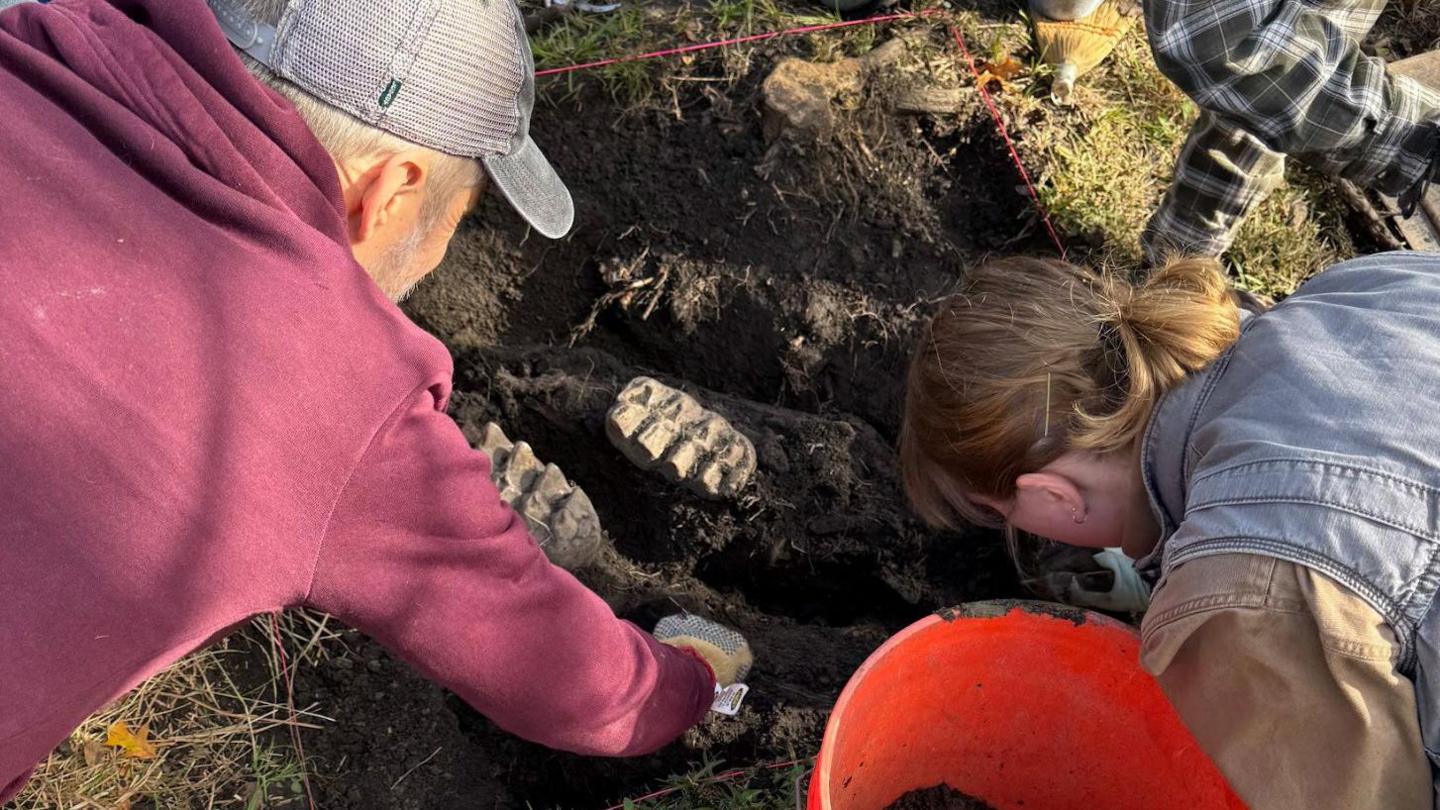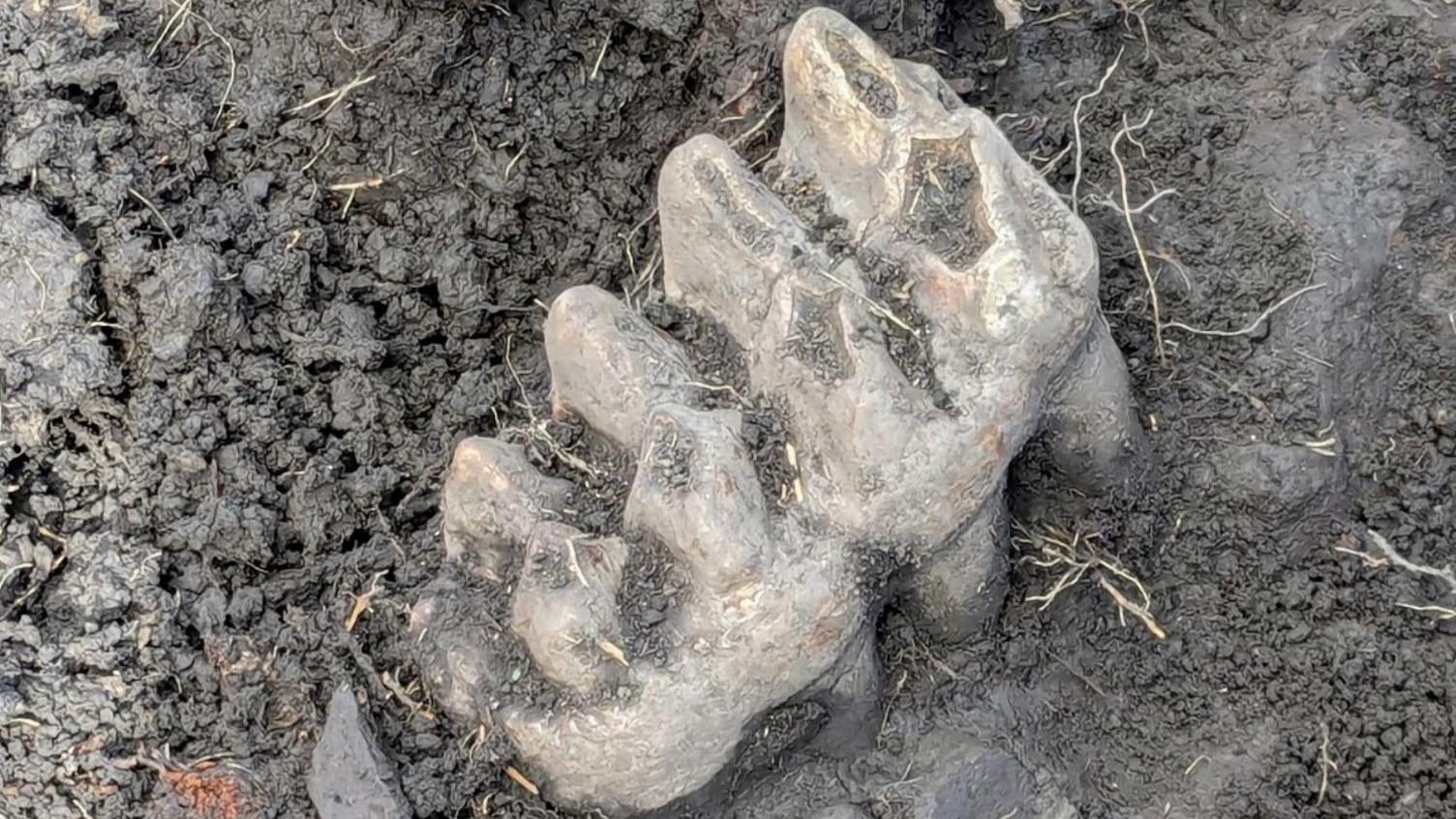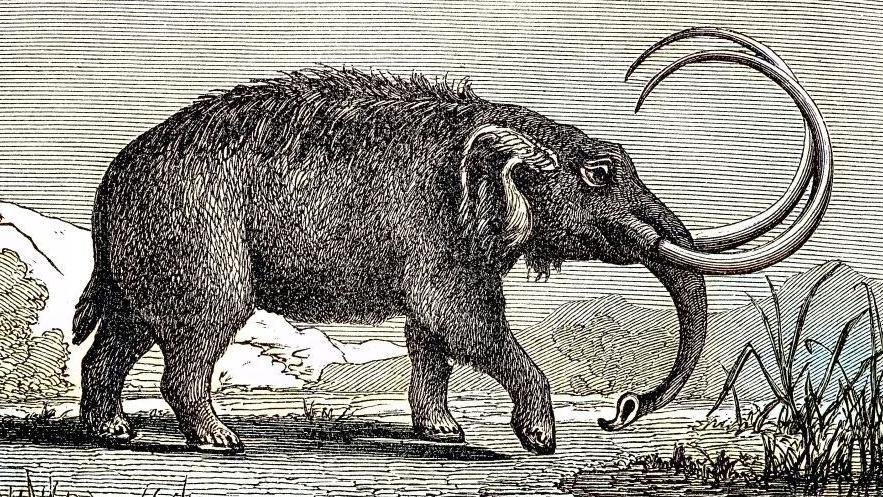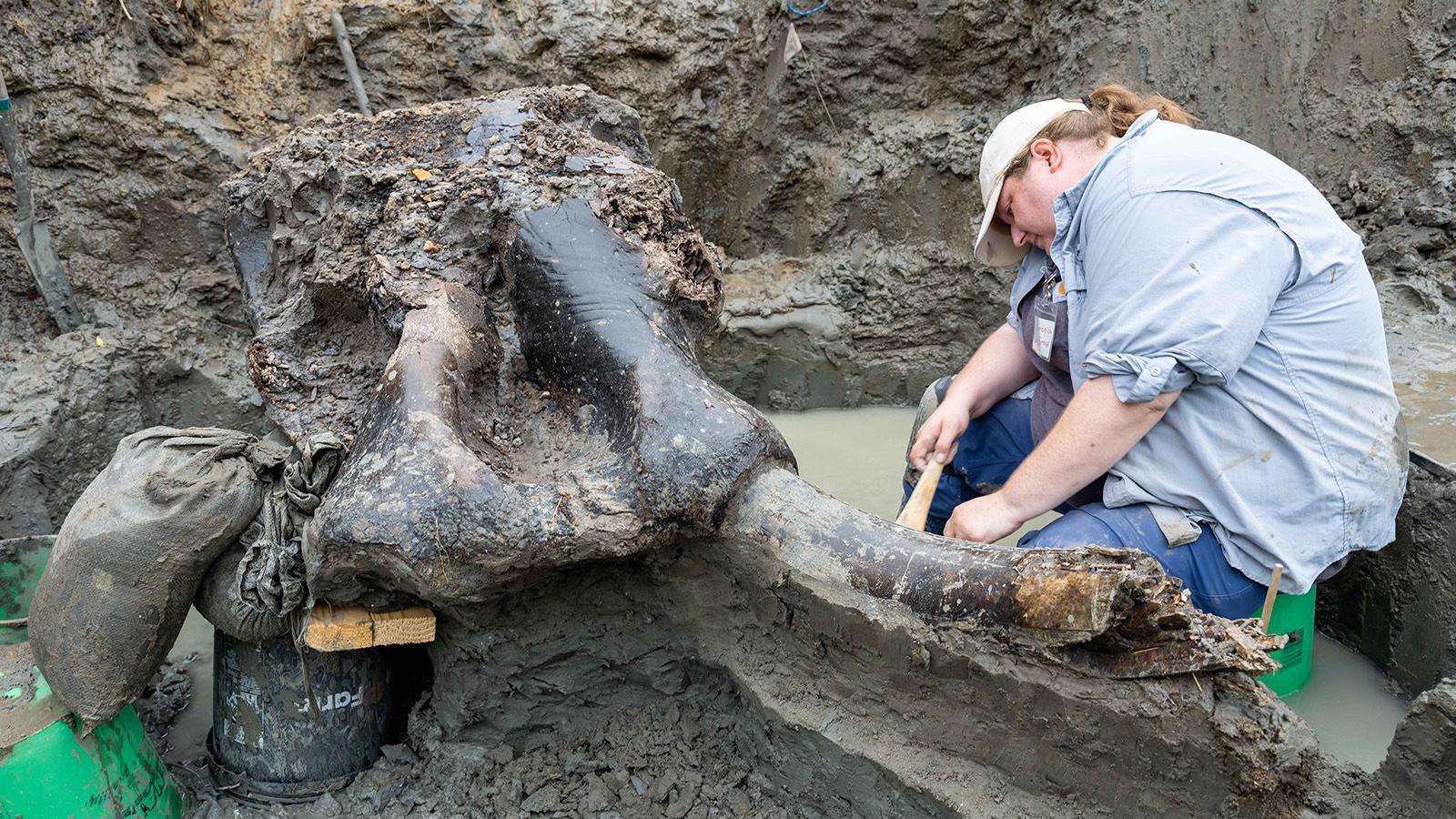NY homeowner makes jaw-dropping mastodon discovery in backyard

- Published
A New York resident has unearthed a mastodon jaw protruding out of the topsoil in the backyard of their home, the first such find in more than 11 years.
Researchers, who were alerted to the jaw-dropping scientific discovery in Orange County, spent about two and a half days digging at the home, uncovering more mastodon bone fragments and a complete adult jaw.
Mastodons are related to the modern day elephant and now-extinct mammoths. Historians say the ancient beasts lived across the Earth, but only fossils found in North America have been strictly identified.
"I'm thrilled that our property has yielded such an important find for the scientific community," the homeowner said in a statement.

"When I found the teeth and examined them in my hands, I knew they were something special and decided to call in the experts," he said.
The mastodon jaw recovered by the staff from the New York State Museum and the State University of New York is well preserved and can help provide insight as to which creatures inhabited the area during the Ice Age.
"This mastodon jaw provides a unique opportunity to study the ecology of this magnificent species, which will enhance our understanding of the Ice Age ecosystems from this region," Dr Robert Feranec, director of research and collections and curator of Ice Age Animals at the New York State Museum, said in a statement.

Over 150 mastodon fossils have been found in New York with one third of them specifically from Orange County, according to the New York State Museum.
"While the jaw is the star of the show, the additional toe and rib fragments offer valuable context and the potential for additional research," said Dr Cory Harris Chair of SUNY Orange's Behavioral Sciences Department. "We are also hoping to further explore the immediate area to see if there are any additional bones that were preserved."
Mastodons went extinct around 13,000 years ago.
The creatures are related to the modern-day elephant, but had flatter skulls and smaller ears.
Mastodons also resembled now-extinct mammoths with their long upper tusks, but were shorter and stockier.
Related topics
- Published22 August 2024
